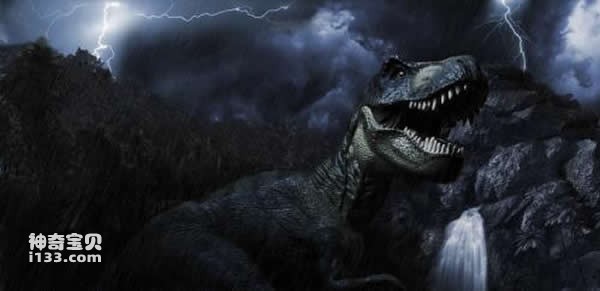In 1853, 20 Victorian dignitaries held a New Year's dinner inside a dinosaur model that had been on display in 1851. This model, which is still preserved in London's Crystal Palace Park, was the world's first real dinosaur model, and it captured the public's attention to this day. But now, most people think that dinosaurs are still a failure because, with the exception of birds, their lineage is nearly extinct. A large impact between a dead star and the Earth 65 million years ago led to their mass extinction. This event negatively affected our understanding of dinosaurs. In fact, dinosaurs were very successful.

Dinosaurs ruled the entire land for 135 million years, twice as long as the age of mammals. During this period, more than 1,000 species of dinosaurs evolved. They lived in all corners of the land, including Antarctica. They varied in size. The disparity ranges from as small as a penguin, weighing less than 1 kilogram, to as large as a herbivorous dinosaur weighing 70 tons. While all attention is focused on their extinction, a more intriguing question arises: How did the dinosaurs become so successful?
A team of researchers from Birmingham and Lapworth Museums hope to shed light on the origin story of the Triassic dinosaurs. In the past 20 years, the discovery of dinosaur fossils and genera has increased rapidly. A new species is discovered every 1.5 weeks. This team has described a total of 11 new species since 2005. The earliest dinosaur fossils appeared in the Middle Triassic 240 million years ago, and recent evidence shows that dinosaurs originated in the long ecological recovery period after the P/T boundary mass extinction event, which was a period in earth history. The largest extinction event was probably caused by volcanic eruptions and associated climate changes. This extinction event caused the disappearance of most early reptiles and amphibians, leaving corresponding ecological space for the evolution of dinosaurs. During the first 40 million years of the dinosaurs' existence, the world was still dominated by other reptiles, such as therapsids, entosaurs, and pseudosuchians. The research team's work mainly focuses on understanding this "long running-in period". By connecting data such as size and evolutionary lineage trees, the researchers clearly gave the time, speed and process of dinosaur radiation.
At the end of the Triassic period 200 million years ago, many other reptiles became extinct in the Triassic/Jura mass extinction event, which was also linked to volcanic activity and climate change. However, the dinosaurs survived, diversified rapidly, and experienced huge changes in body shape. The age of dinosaurs officially began. Why the dinosaurs survived this extinction event remains a mystery, but paleontologists speculate that the dinosaurs' rapid growth rate and efficient respiration may have been the key to their survival.
The story of dinosaur evolution is thus dominated by three large, rapid climate-induced extinction events: the first at the end of the Permian, which made room for dinosaurs to evolve; and the second at the end of the Triassic, when dinosaurs began to evolve. Occupied a dominant position, and different body types appeared; the third time was at the end of the Cretaceous period, when the dinosaurs finally went extinct. Focusing on extinction events may provide us with a different perspective on evolutionary history.
animal tags:
We created this article in conjunction with AI technology, then made sure it was fact-checked and edited by a Animals Top editor.